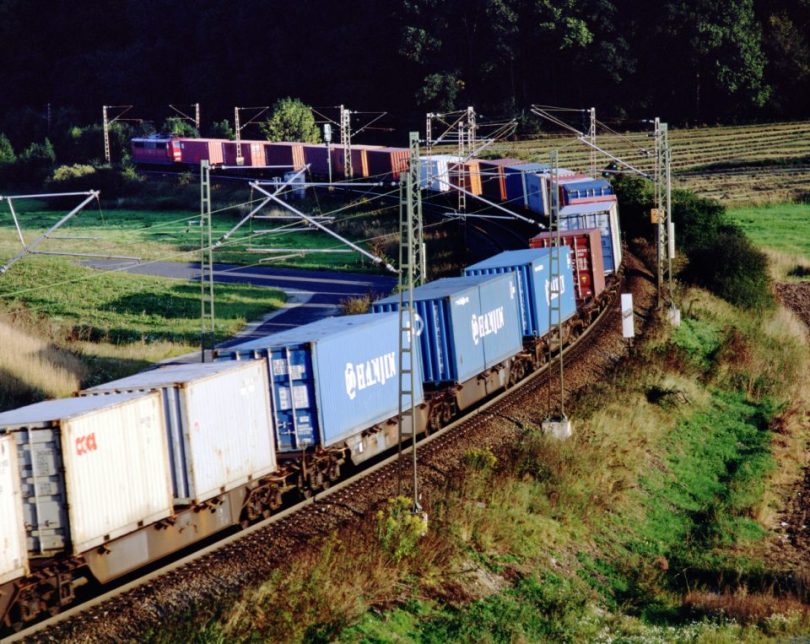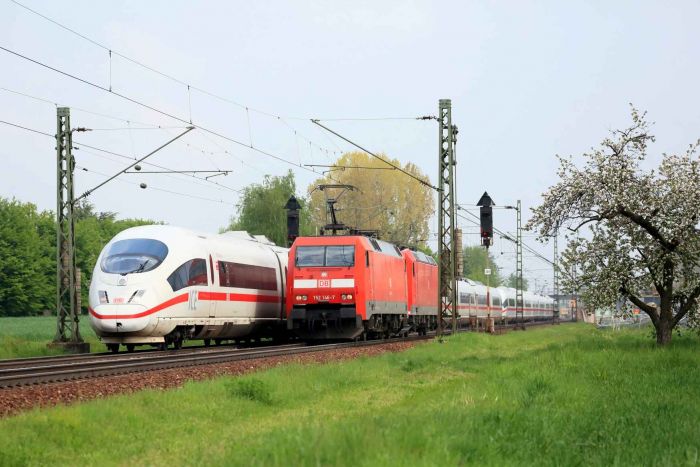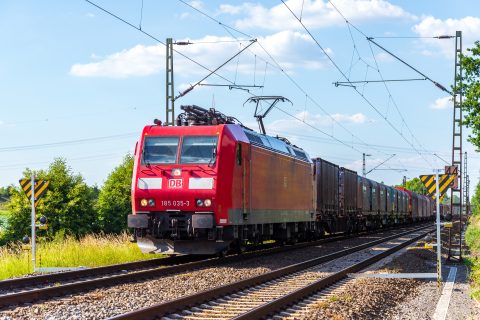How long until using longer trains?

740-metre trains have been tested on Dutch and German tracks for a few years now. The expansion takes place at a slow pace since infrastructure needs time to adapt to their use. However, according to Jolanda Plomp, Managing Director of LTE Netherlands, infrastructure managers and governments from both countries are willing to invest and develop longer freight train transportation and embrace its benefits.
A few weeks ago, the German Federal Ministry of Transport presented a list of rail-related financial agreements for 2021. Among the most notable was the 52 million euros investment in the project ‘Overtaking tracks for 740 metres long freight trains’, which aims to implement infrastructure upgrades that will make the German railway network compatible with the use of longer trains. The next step would be to “also win the trust of customers”, said Plomp, while referring to some struggles that this kind of service faces.
‘Overtaking the tracks’
As mentioned above, there are certain attempts from Germany and the Netherlands to introduce longer trains on their rail networks, but the whole process takes quite a long time. Why is that so? According to DB Netze, the capacity of rail tracks is the biggest issue currently. Freight trains operate at a relatively lower speed than passenger trains. Consequently, when passenger trains use the same route as freight trains, there is a need to overtake them and avoid delays. In practice, his means that the freight train has to switch to another pair of tracks so that the faster passenger train can overtake it.
Understandably, this whole process takes place at specific track points, where, with the help of switches, the trains change lanes. In particular, the overtaking procedure requires two switches, one for getting off and one for getting back on the tracks. And here lies the main issue for long trains: if these two switches are found at a distance of 750 metres from each other, then there are no safety issues for overtaking. However, if they have less space in between, then it is impossible to change lanes.

The German governmental investment for 2021 aims to change this situation by modernising several rail network parts. According to the official plan until 2030, the main prerequisite is to provide more overtaking tracks that will simultaneously facilitate the systematic use of longer trains by freeing capacities. After all, both the government and DB Netz recognise that longer freight trains will benefit the economy, rail transport, and the environment. How? Transportation will become cheaper; there will be more available capacity, and with fewer trains, CO2 emissions will get reduced.
The Dutch experiment
In 2020 LTE Netherlands became the first rail carrier to use 740-metre trains on Dutch tracks as part of a pilot programme. With its customer Contargo and in collaboration with infrastructure managers ProRail and DB Netze, LTE ran a weekly train between the Netherlands and Germany through Venlo. Especially in Germany, the test was successful without any significant hurdles. In the Netherlands, though, the case was a bit different. Due to the lower number of compatible tracks and the insufficient infrastructure for longer trains in terminals like the ECT in Maasvlakte, the company dealt with issues that were fortunately easily and quickly resolved.
The main difference between the two countries that makes them more or less compatible with longer trains lies in the way trains are handled in general, and on the size of their networks. As Jolanda Plomp mentioned, despite the obstacles LTE found on its way, the overall takeaway from a year of trials was very positive. In fact, the company managed to get permission to operate longer trains during 2021 too. However, the frequency of its 740-metre train will not be the same as last year ,because it will not have weekly trips. Nevertheless, LTE runs five weekly trains between the Netherlands and Germany, not as long as 740 metres but longer than the established length of 600 metres.
LTE’s case constitutes a good example of how the possibility to run longer trains than usual could work to the benefit of rail carriers by lifting train capacity restrictions. A train does not necessarily have to be 740 metres long on every trip. However, it can adjust the number of carried wagons based on the customer demand. Do customers think in the same way, though?
Lack of reliability
Plomp highlighted the lack of customer trust as the biggest issue for the pilot service and the further development of 740-metre trains. Because infrastructure is not ready yet, longer trains on tracks could cause capacity issues, as mentioned above, and delays. Logistics companies and shippers would not be happy with such a situation. That is why they still avoid booking longer trains even though they have the chance to transport more wagons and respectively more products.
Their concerns are not absurd. Plomp explained that if three or four more carriers choose to use longer trains under the current conditions with insufficient infrastructure, both German and Dutch networks will face tremendous problems. Consequently, even though companies are willing to use 740-metre trains, their customers doubt such an enterprise’s feasibility and ability to return more profits than losses.
‘Invest, invest, invest’
What could be done with a service that has enormous potential for all parties involved but doesn’t seem able to succeed? RailGood’s Director, Hans-Willem Vroon and Jolanda Plomp, would agree in this case: invest in infrastructure and cooperate. Vroon appeared intransigent in his opinion that there is no reason to plan longer trains when investments are not there yet. Network developments and upgrades are the only way to introduce 740-metre trains in the market and make good use of them. Any other scenario would cause more problems than solutions.
Plomp shared the same view, also underlying the importance of cooperation between ProRail and DB Netz and the exchange of knowledge and examples. “It is positive that ProRail is putting some effort towards this direction and that the government is also willing to invest”, she said. Together with DB Netze, which already implements some of its plans for longer trains, they could reach a good level of capacities quite soon. In any case, since 2021 is the European Year of Rail, “working for longer trains on tracks is one of the best ways to celebrate it”, she concluded.
Watch the show
You can watch the dedicated RailFreight Live show on 740-metre trains, featuring Hans-Willem Vroon and Jolanda Plomp.
Also read:
You just read one of our premium articles free of charge
Want full access? Take advantage of our exclusive offer






Incremental upgrades are the wrong approach, in my opinion.
Going directly to 1500 meters would be a better step, in my opinion (but yards and sidings are SO inflexible).
Going through the licensing/permissions/construction/signalling upgrades every time for 50 or 100 meters is wasteful.